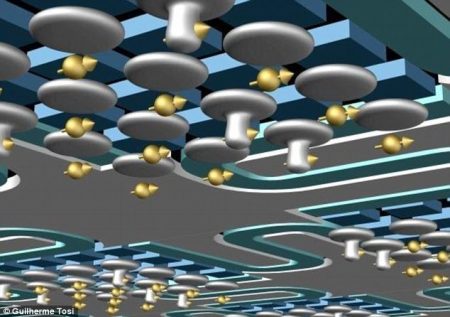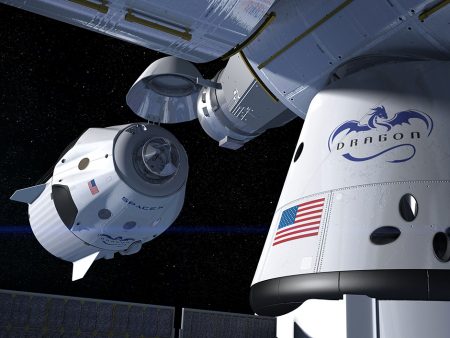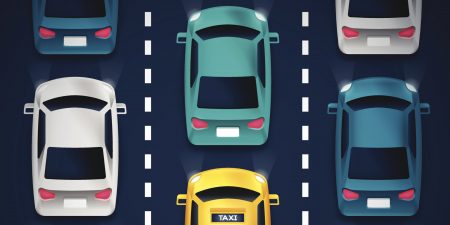January 2, 2018 – In yesterday’s posting I wrote about the science and technology trends I anticipate will continue to produce both innovative and disruptive change to our human condition in 2018. I shared some of my predictions for artificial intelligence, battery storage, biomedicine and biomedical engineering. Today I have picked out four additional fields where I expect significant progress to occur in the coming year.
Although I have decided to shine a light on these seven subjects in these first two postings of 2018, there are many other fields where 2018 will see significant advances, and I intend to cover most of them as the year unfolds.
Genetic Engineering
If any one field of science is to be singled out as game breaking, it is the one that is parsing the genetic makeup of all life on Earth with the intention of curing inherited and acquired diseases that cause changes to our DNA and RNA. Under the name “gene drive,” we saw in 2017 the first use of CRISPR/Cas9, to correct diseases of a genetic origin. In 2018 we will see the first therapies carried out on patients suffering from a variety of cancers, ALS, Muscular Dystrophy, Multiple Sclerosis, Sickle Cell Anemia, Huntington’s, Alzheimer’s, and other inherited or epigenetically acquired diseases. And this is just a beginning use for this amazing scientific breakthrough. Variants of CRISPR can now edit nucleobase pairs, the steps in the staircase that is the DNA ladder.
Not just humans will be the recipients of gene drive technology. New variants on staple crops will help feed a world where climate change presents a considerable threat to agriculture. Scientists are engineering wheat, corn, rice, soybean, millet, cassava and other principal food crops to withstand drought, excessive heat, saltwater intrusion, insect and weed infestations, and other environmental challenges to feed a planet that will see our human population increase by more than 2 billion by mid-century.
Genetic modifications to insects that not only infect humans with diseases like Malaria, Zika, Chagas, West Nile Virus, Chikungunya, and others will do more to wipe out these diseases than all previous efforts to date. We will see the first deployments of genetically altered insects that will sterilize whole populations responsible for destroying the food we grow.
This technology is just getting started in 2018 with the next 10 years being positively revolutionary.
Quantum Computing
The race to build the first commercial quantum computer using silicon, complete with operating system and application development tools, has almost been run. Why silicon? Because we have been building other types of computers with this material since the dawn of the age of computing. But quantum bits or qubits, the equivalent of bits in regular computers, have always been a bit of a challenge to build into a physical substrate. Producing qubit chips using current manufacturing technology, as a result, has been difficult.
Today, the leading supplier of quantum computers is a small company headquartered in Vancouver, British Columbia. D-Wave sells a single quantum computer for as much as $15 million U.S. per unit. Its customers aren’t everyday computer users but rather companies like Google, NASA, and Lockheed-Martin. IBM and Microsoft may have home-grown quantum computing devices of their own but they aren’t building any for customers just yet.
The big breakthrough may come from Australia where University of New South Wales researchers have architected a quantum chip built using silicon that is based on “flip-flop” qubits. These qubits are controlled using electric signals, instead of magnetic ones which makes construction of the chip far easier. The precise arrangement of single atoms to ensure qubits function properly is no longer a constraint meaning conventional manufacturing processes will soon be able to turn out significant numbers of these qubit chips. With this new type of qubit, quantum entanglements can happen hundreds of nanometers apart. That makes quantum computer manufacturing to scale realizable for the first time in 2018. That’s almost a decade ahead of what prognosticators and futurists have been predicting.
Space
Heavy-lift payload capacity is about to become a reality in the space business in 2018 as SpaceX prepares to launch its Falcon Heavy this month in a test that will be just the first of many space firsts. These include the first human-crewed launches to the International Space Station by SpaceX and Boeing. By the end of the year, SpaceX plans to send two tourists on a trip to and around the Moon, duplicating the Apollo 8 mission of 1968.
We should also witness the finalists in the Google Lunar XPrize attempt to come away with the $20 million that remains at stake. No finalist represents a big corporation which is an interesting development. All are working with small budgets showing that billions need not be spent to get to the Moon. Should one or more succeed, it will lead to accelerated commercialization of both the near-Earth and lunar space, a development that only a few short years ago was considered inconceivable.
CubeSats and an increased number of commercial space launch providers will further democratize the study of Earth, near-Earth and Deep Space. The miniaturization of sensors and instrumentation have made it possible to build satellites that can do real research for as little as $10,000, and can be launched economically with a bundle of other CubeSats on commercial or national space carriers such as India, and Japan, for a fraction of what it cost for NASA, Roscosmos and even China. Calling 2018 the year of the CubeSat may not be that far from the truth.
Transportation
Electric vehicles (EVs), autonomous transportation, and hyperloops have dominated 2017 transportation headlines. In 2018 expect to see autonomous ships and long-haul trucks become part of the tech talk conversation. The commitment to EV technology among the major manufacturers of automobiles globally is a welcome response by these companies to do their bit to reduce our reliance on fossil fuels. Autonomous vehicles being tested today in a limited number of cities around the world will see a growing proliferation of both closed circulation and public street testing.
Now consider adding three more technologies to emerge in 2018.
The first is the reappearance of commercial supersonic transport with a number of vendors in the running to create a next-generation version of the Concorde. Aerion, Boeing, and Lockheed-Martin are all in the running.
The second is the race to create commercial travel through suborbital space to shrink the time and distances for global travelers. There are so many companies which have thrown their hats into this ring that we should see considerable progress made in solving the technological barriers to entry in 2018. The companies in the running include Virgin Galactic, SpaceX, Blue Origin, and the UK’s Skylon hybrid jet-rocket plane.
Third is the evolution of vertical urban transport with magnetic levitation elevator technology that soon may change how cities get built. Thyssen Krupp is the technology leader in this field. And the implications for future buildings will turn them from today’s vertical towers, into structures that may resemble the branches of trees. Maglev elevators have no cables. They run on rails that can go vertically or horizontally or somewhere in between. This is technology that has profound implications for what could be defined as micro-urban transportation within and across complexes of buildings, literally highways for passengers to travel through the urban sky.











